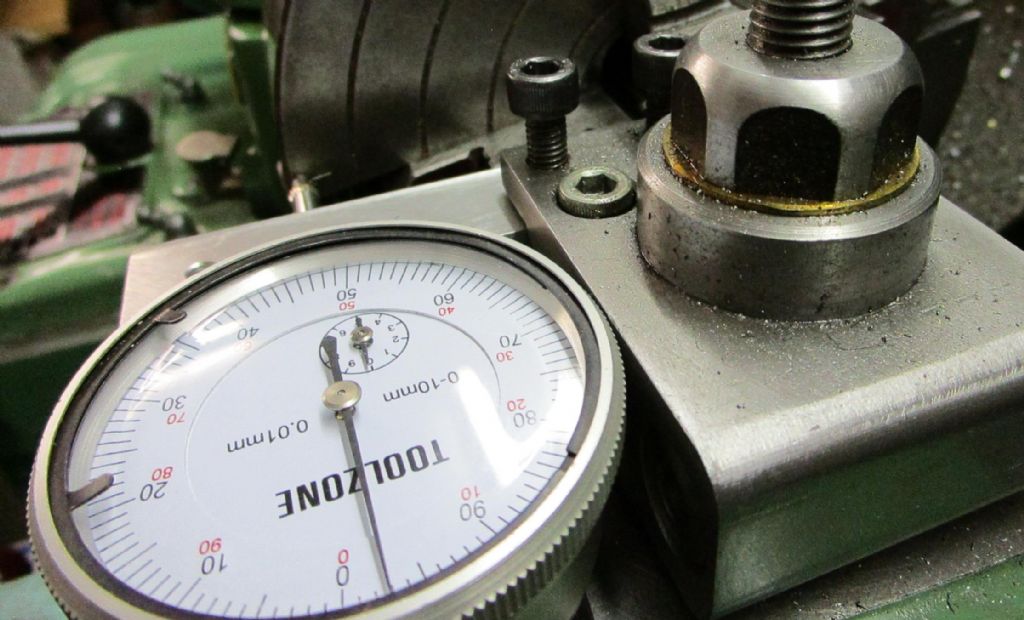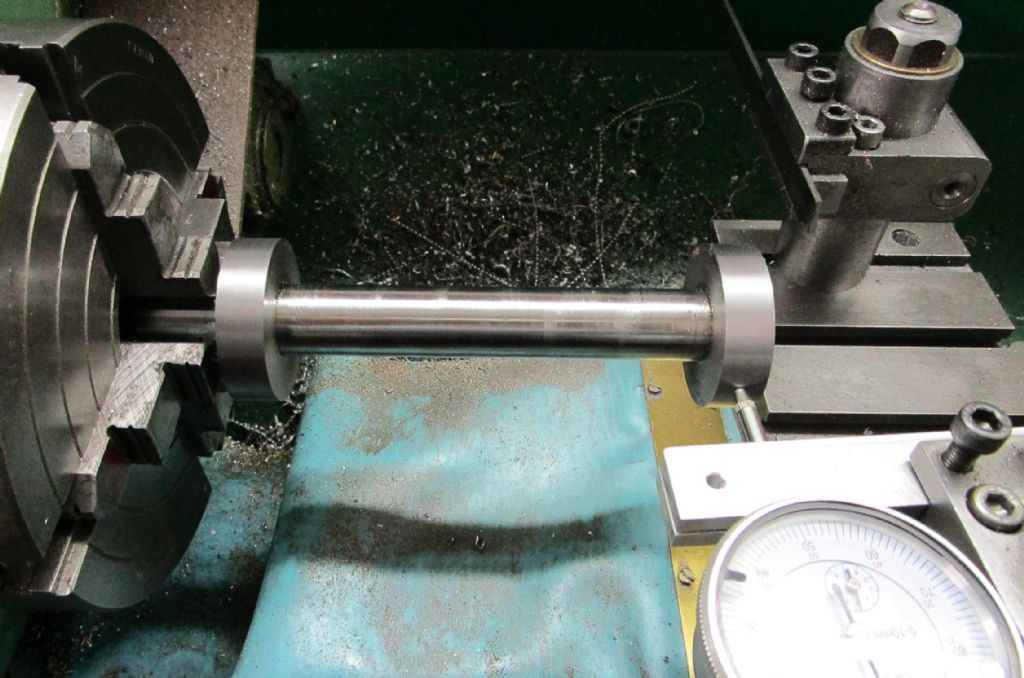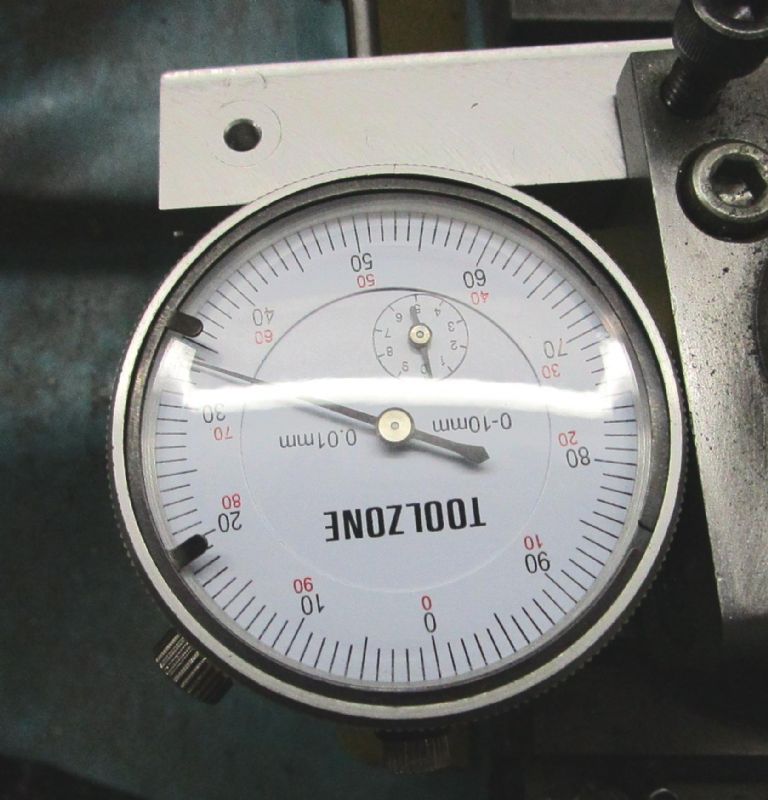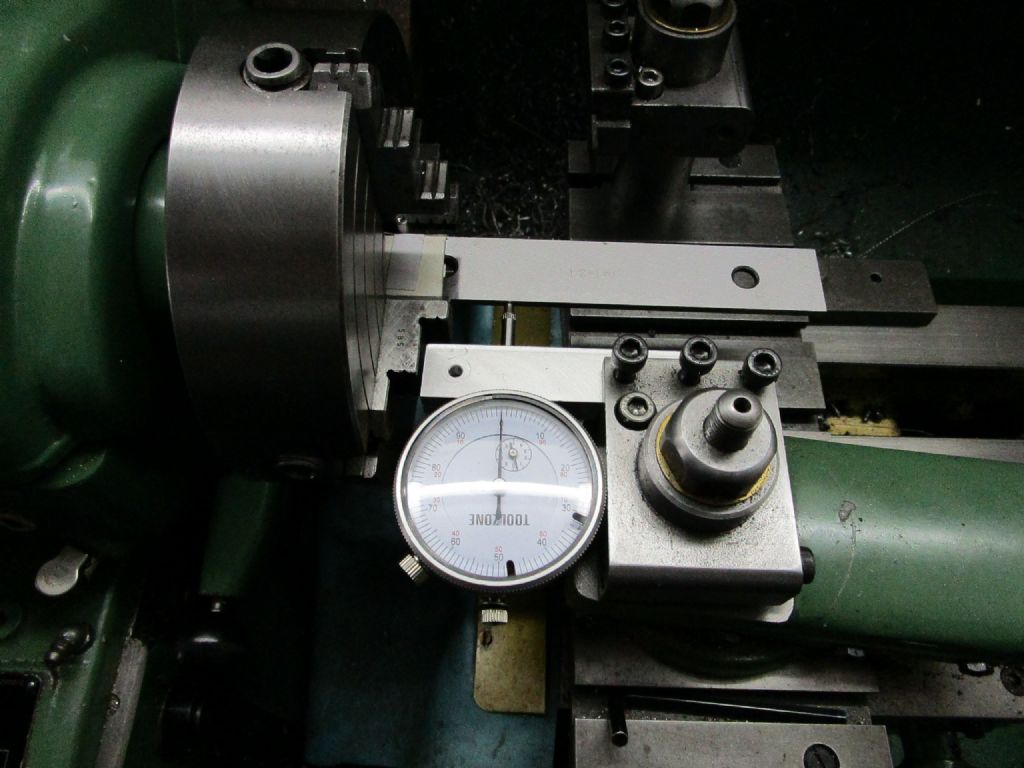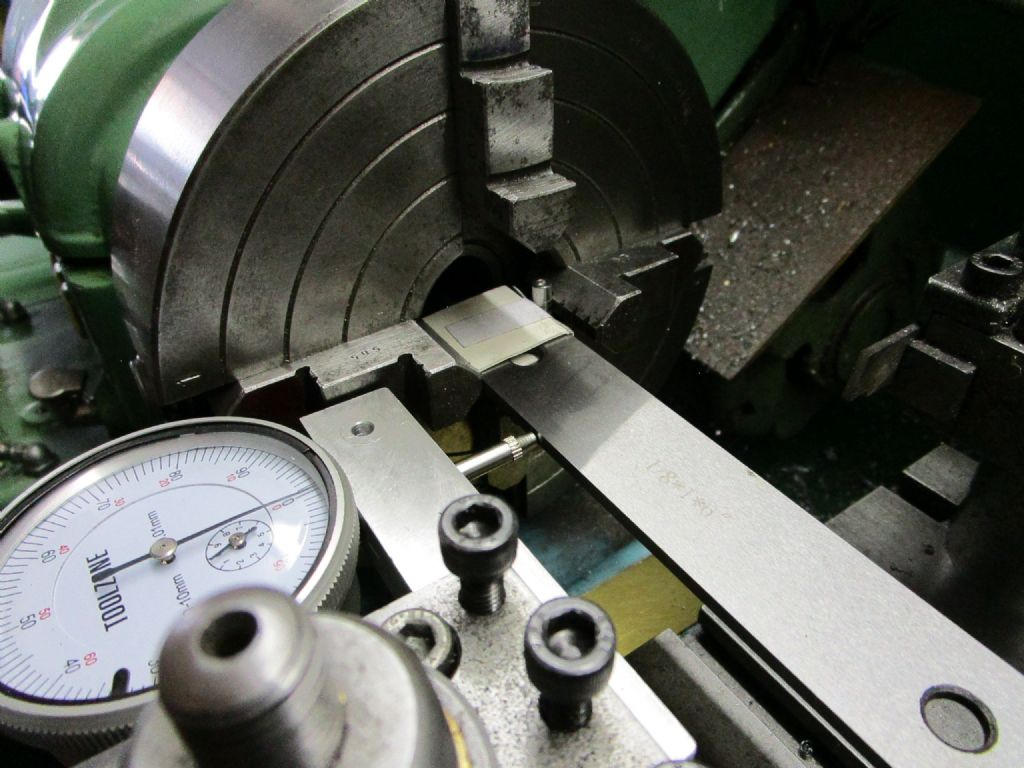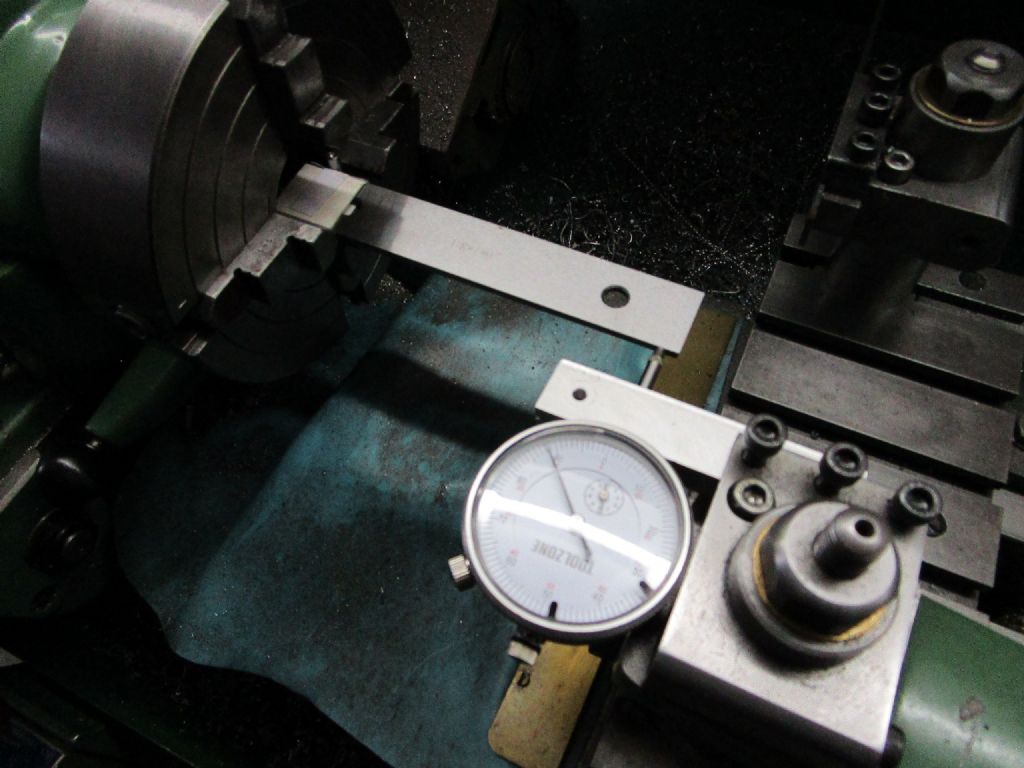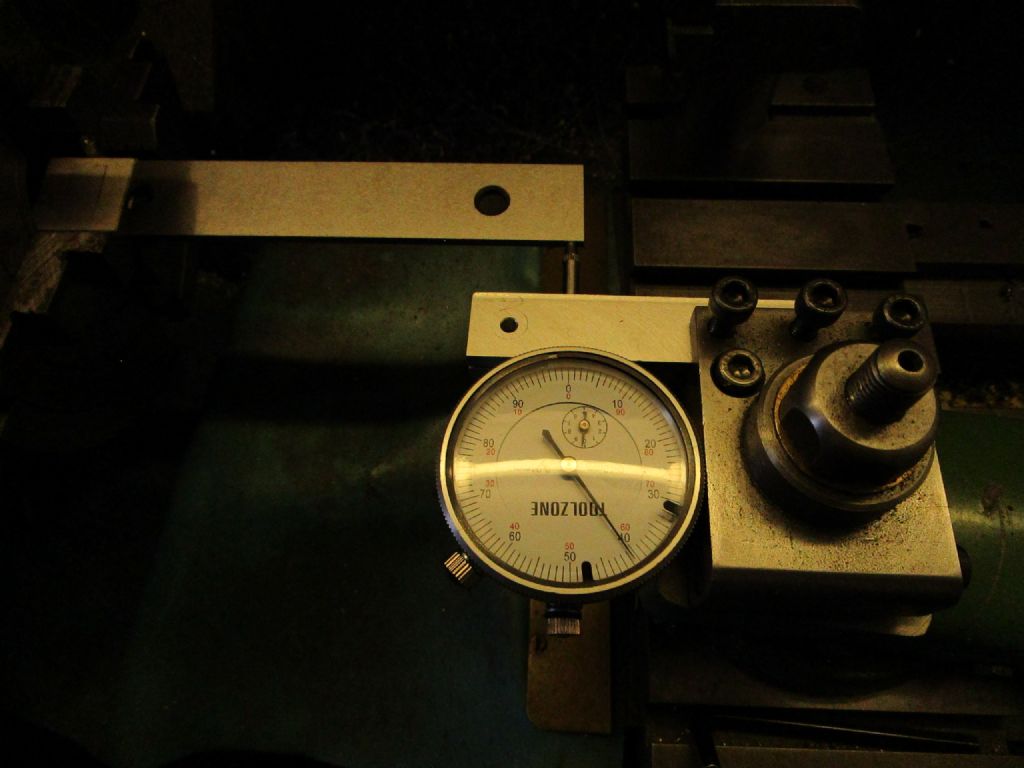Hi Guys,
Pete is the winner I think.
[quote] The chuck body runs true but the jaws do not hold the part straight. If all of the above check out OK, this is the last option.[/quote]
Comments below the pictures. By the way I somehow managed to take a video but the forum won't let me upload it.

I used a 1" inch parallel to check how straight the jaw was. I used a piece of postcard and a small dowel to hold the parallel tight up against the jaw face. I set the dial gauge so that it was level with the edge of the parallel.

In this picture you can see the arrangement. This is jaw No:4. I used the lower jaw to support the parallel.

In this picture I've run the dial gauge down to the end of the parallel. It shows that its moved away by about 0.6 mm.

Sorry about the colour, fluorescent lighting. This jaw No1 was the worst one. I stopped taking pictures at this point.
All the jaws have some runout when measured in this way ! I'm not sure why but they all seem to run away from the tool holder. The worst ones were jaws 1 and 2. When I gripped the parallel by the flat sides you could see that the indentations in the cardboard were deeper on one side.
It also explains why I can set the work piece true at either end and its out at the other.
So it seems that I've got the source of the problem… badly or wrongly ground jaws. After all this time I doubt that there is any point in having a word with Pratt Burnard.
To answer some questions:
Yes the chuck is the original slim body one that was supplied with the lathe when I bought it directly from Myford. They arranged with Denford to deliver and set the lathe up. At the time Denford made bridgeport mini mills that were badged and sold by Myford. Its had three homes since I bought it.
Thanks for all the comments and suggestions. Now to think about what I'm going to do about it.
Edited By John Baron on 17/05/2020 10:48:16
John Baron.



